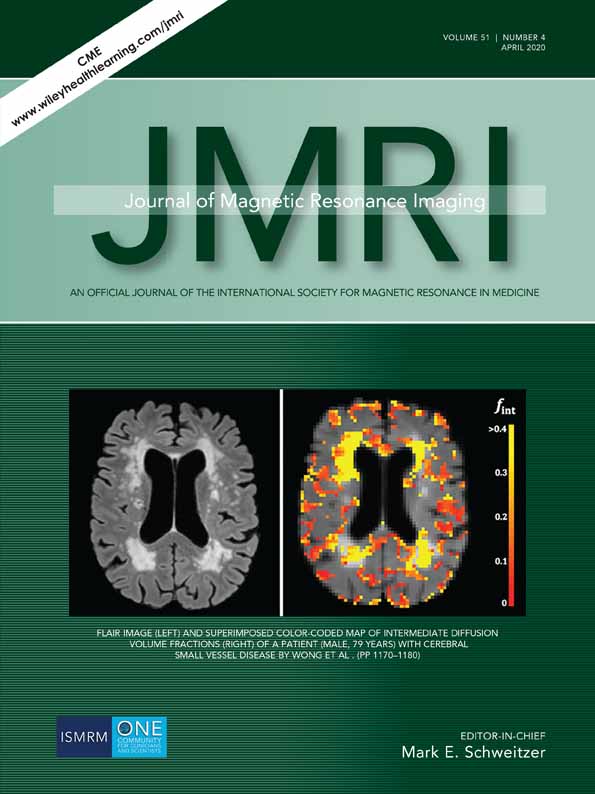Diagnostic performance of multiparametric MRI in the evaluation of treatment response in glioma patients at 3T
Abstract
Background
MRI is one of the most important techniques to assess the treatment response of gliomas. However, differentiating tumor recurrence (TuR) from treatment effects (TrE) remains challenging.
Purpose
To compare the diagnostic performance of MR diffusion-weighted imaging (DWI), arterial spin labeling (ASL), proton MR spectroscopy (MRS), and amide proton transfer (APT) imaging in differentiating between TuR and TrE in posttreatment glioma patients.
Study Type
Prospective.
Population
Thirty patients with suspected tumor progression.
Field Strength/Sequence
DWI, ASL, proton MRS, and APT imaging were performed at 3T MR.
Assessment
MR indices, including ADC, relative cerebral blood flow (rCBF), ratios of Cho/Cr, Cho/NAA, and NAA/Cr and APT-weighted (APTw) effect were obtained from DWI, ASL, proton MRS, and APT imaging, respectively. Indices were measured in the contralateral normal-appearing white matter and lesions defined on the Gd-enhanced T1w image. TuR or TrE was either determined histologically or clinically from longitudinal MRI follow-up for at least 6 months.
Statistical Tests
The diagnostic performance of the indices was evaluated using Student's t-test, receiver operating characteristic (ROC) curve, and multivariate logistic regression analyses.
Results
Among the 30 patients, 16 were diagnosed as having TuR and the rest having TrE. The recurrent tumors showed a significantly higher APTw effect (1.56 ± 1.14%) and rCBF (1.44 ± 0.61) compared with lesions representing treatment effects (–0.44 ± 1.34% and 0.72 ± 0.25, respectively, with P < 0.001). The areas under the curve (AUCs) were 0.87 and 0.90 for APTw and rCBF, respectively, in differentiating between TuR and TrE. Combining APTw and rCBF achieved a higher AUC of 0.93. MRS index ratios of Cho/Cr (P = 0.25), Cho/NAA (P = 0.16), and NAA/Cr (P = 0.86) and ADC (P = 0.37) showed no significant differences between TuR and TrE lesions, with AUCs lower than 0.70.
Data Conclusion
Compared with DWI and MRS, ASL and APT imaging techniques showed better diagnostic capability in distinguishing TuR from TrE.
Level of Evidence: 1
Technical Efficacy: Stage 4
J. Magn. Reson. Imaging 2020;51:1154–1161.




